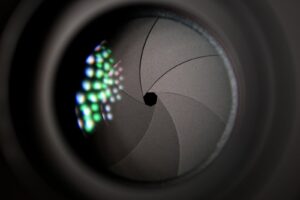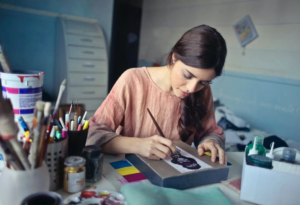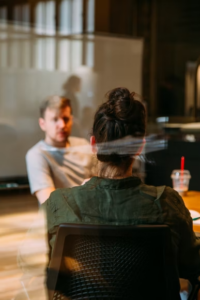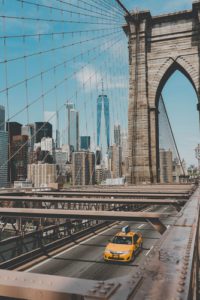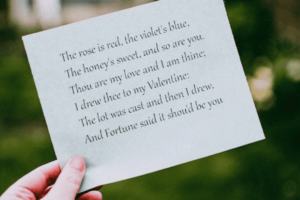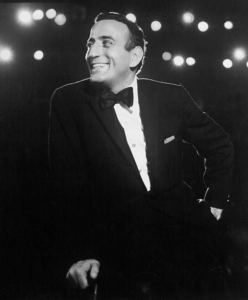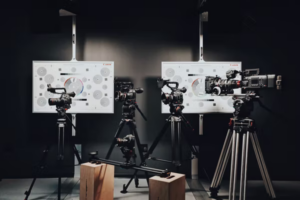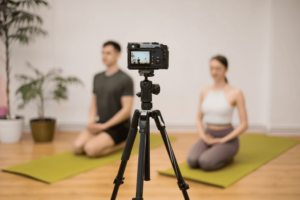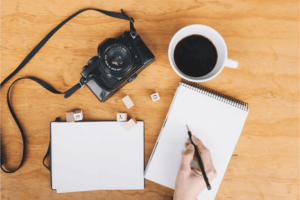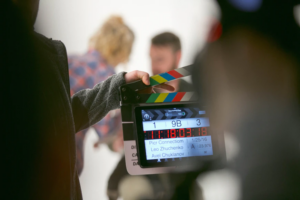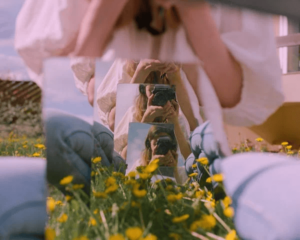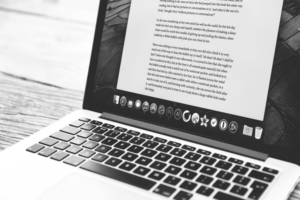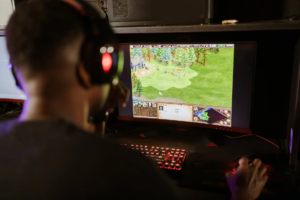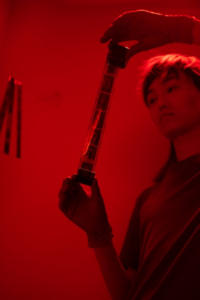A low-angle shot is a shot in which the camera angle is positioned below the eye line of the subject, pointing upward. An extreme low-angle shot is positioned below the subject’s feet, offering a sharper contrast in the shot.
A low-angle shot in a film can convey a number of emotions or feelings about the subject in the frame. It can also break up the visuals, adjusting the feeling and mood of a scene.

Scene from “Inglorious Bastards“
Understanding how to use the low-angle shot and its best applications can help you make the most of this technique as you set up your scenes.

Scene from “The Invisible Man (1933)“
How to Use the Low-Angle Shot
As you consider your shot list and how to set up each scene, you may want to include low-angle shots to convey power, vulnerability, perceived height, or a combination of these elements. It’s a versatile shot that can create different feelings and emotions in viewers.
Low Angles Can Convey Power
Using a low-angle shot can convey power in a character, whether for good or for bad. In “Raising Arizona,” the low-angle shot showcases the power of the Biker who will stop at nothing to achieve his goal.
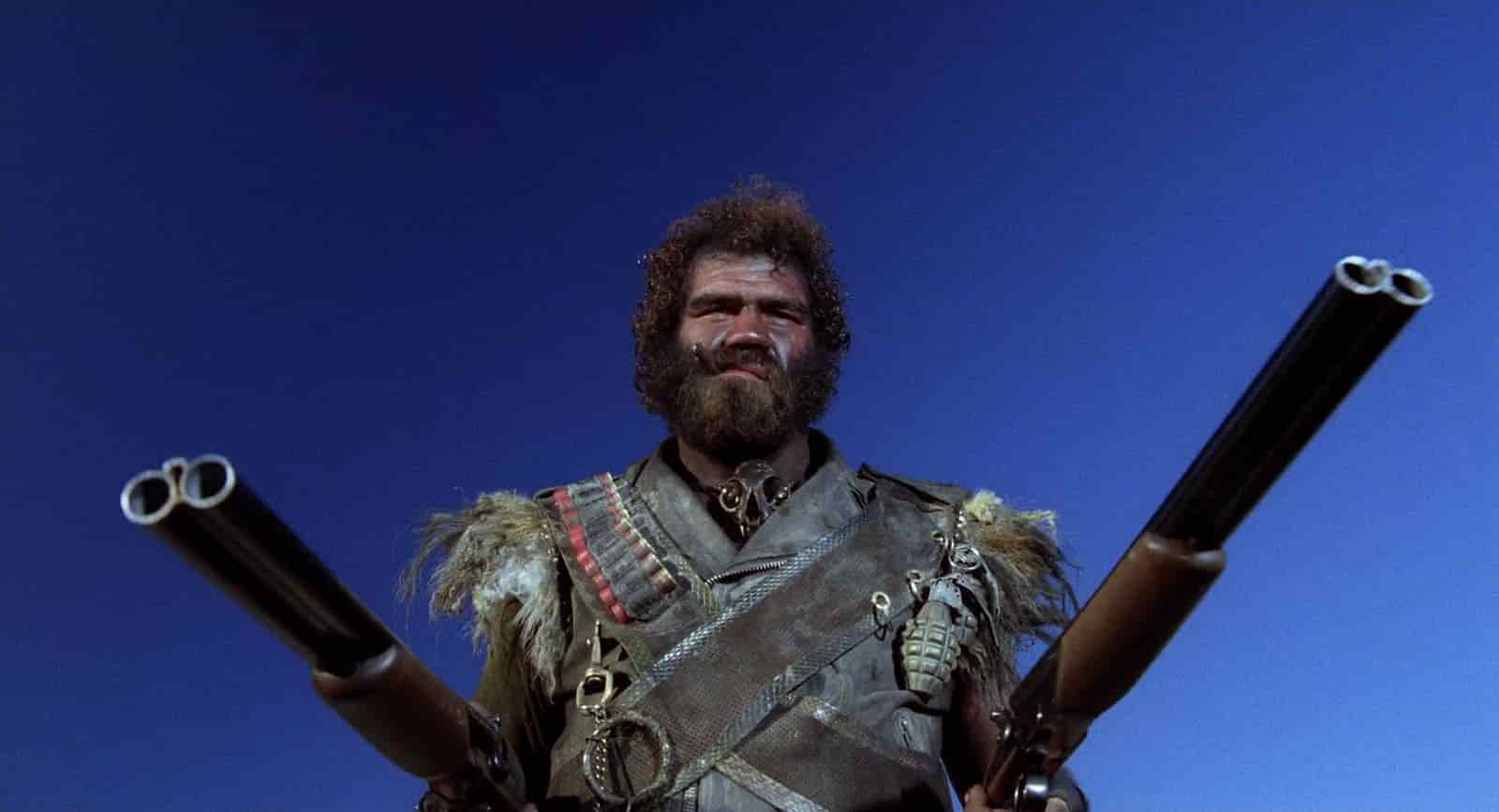
Scene from “Raising Arizona“
In “The Matrix” franchise, the low-angle shot used to show the agents conveys that these men are in a position of power. It also frames the shot from the perceived point of view of the main character, Neo, who would typically be sitting in the visible cubicle on a workday.
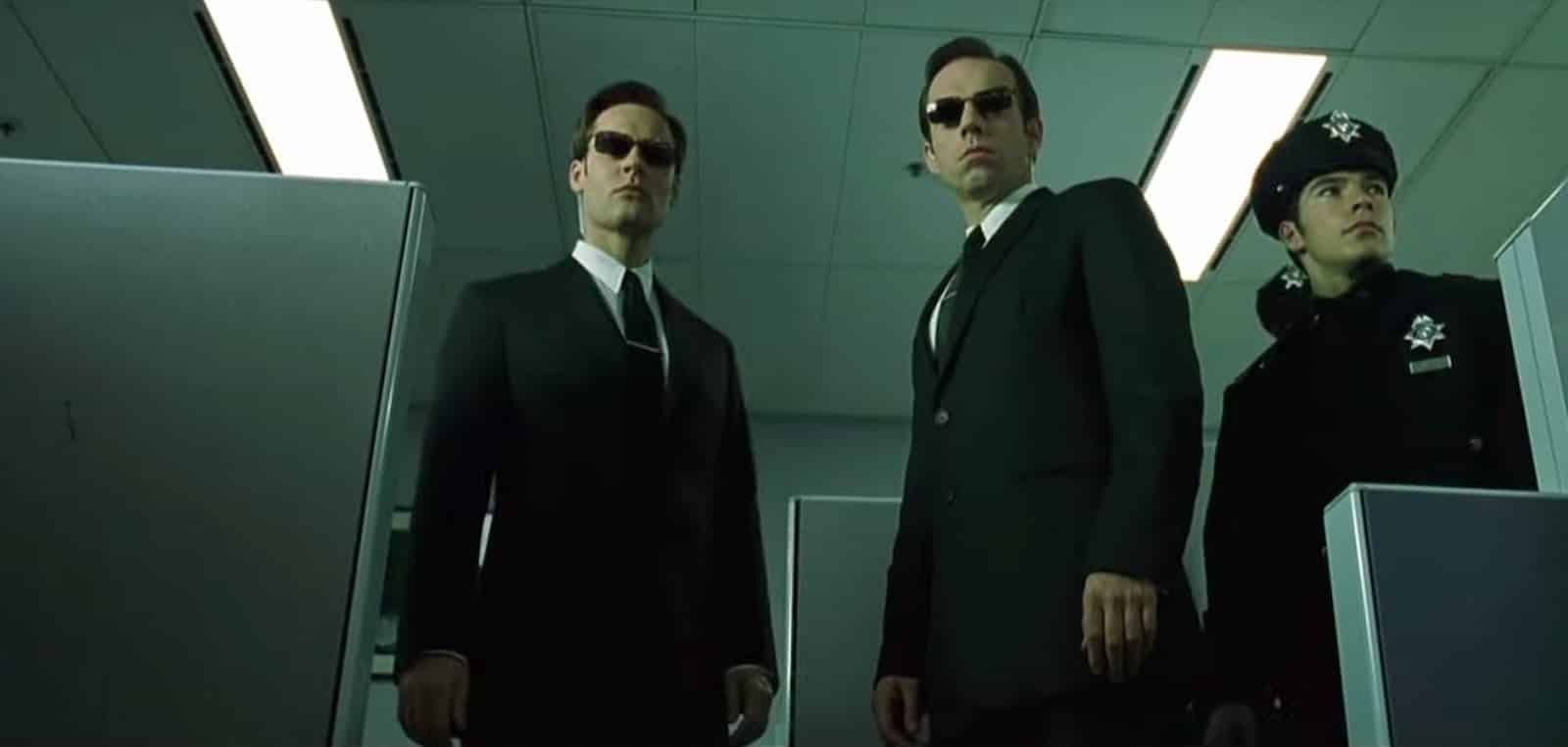
Scene from “The Matrix“
You can see this shot in effect in the clip below.
Low Angle Can Convey Vulnerability
In addition to showcasing a person or group of people in power, a low-angle shot can also convey that the person in the frame is vulnerable, trapped, or under attack, like this shot from “300”:

Scene from “300“
Another example is evident in “Mission: Impossible,” where the Dutch angle combined with a low angle shows the claustrophobic, trapped feeling of the scene.

Scene from “Mission: Impossible“
It’s an interesting contradiction to the ability of the shot to convey a person in power. Juxtaposing low angles with high angles can also create feelings of vulnerability.
Low Angles Increase Perceived Height
When shooting from lower, the height of what’s above in the shot looks taller or higher. You can combine this effect with miniature props to create a more dramatic effect. The lower you go, the higher the perceived height will be in the shot.
4 Ways to Use a Low-Angle Shot
When properly executed, a low-angle shot can help reveal aspects of the narrative, build tension, and convey the emotional state of the subject, all without words.
The Classic Subtle Hero
A subtle low-angle shot often sits just below the subject’s eye line, forcing the audience to look up. It helps to highlight the hero in the scene.

Scene from “Moonrise Kingdom“
The Extreme Low Angle
An extreme low-angle shot is a bold choice, potentially showing the perspective of a child or someone who is experiencing substantial fear.

Scene from “Home Alone 2“
The Low-Angle Dolly Push
Combining a low angle with a dolly push can help to build dramatic tension, create a more cinematic experience, or introduce an important character with movement. Even a slight push with a dolly-mounted camera can add drama for the shot’s entire length.

Scene from “Godless“
Low-Angle Establishing Shot
An establishing shot shows the audience a new location, character, or other element of the narrative. When combined with a lower camera angle, the establishing shot can showcase the magnitude of the scenery, making the audience feel vulnerable or in wonderment. It can also make the audience feel part of the story as opposed to outside or above it, like with a high-angle establishing shot.
Examples of Low-Angle Shots
You’ll see low-angle shot examples throughout films and TV shows.
Breaking Bad
The main character in “Breaking Bad,” Walter White, was often shot at a lower angle during the show’s run to show his transition from a weak, ill character to a strong and powerful one. The low-angle shots are particularly interesting to viewers when combined with a point of view shot, providing access to White’s mindset and lab.
Pulp Fiction
Quentin Tarantino, the director of “Pulp Fiction” and many other cult films, often uses trunk shots to set up a lower camera angle. In “Pulp Fiction,” you’ll see the shot when the characters open the trunk of a vehicle to pull out their weapons.
Tarantino also used the trunk shot in “Reservoir Dogs, when the antagonists place a character in the trunk of the car and show that individual’s point of view. As a result of this frequently used low-angle shot, the trunk shot in other films establishes strength and confidence in characters.

Scene from “Reservoir Dogs”
Citizen Kane
“Citizen Kane,” a critically acclaimed classic, showcases instances of the low-angle shot as well. Throughout the film, the audience sees Kane shot from below, sometimes even at an extremely low angle. The purpose of the low angle is to showcase his ambitions at the height of his power.
Bad Boys
Michael Bay is another director known for his unique spin on low-angle shots, known as the “Michael Bay 360 Shot.” This circular camera movement often happens alongside characters grasping the magnitude of a situation or experiencing a big reveal. You can see it in “Bad Boys” and a number of other Bay films.
Here’s another compilation of this epic shot:
Full Metal Jacket
In most of the scenes of “Full Metal Jacket,” we see the drill sergeant at eye level.

Scene from “Full Metal Jacket”
When he focuses on Private Joker, one of the main characters in the storyline, the angle moves lower to put the audience in Joker’s point of view to generate a dominated feeling.
Star Wars
In the early films in the “Star Wars” franchise, Darth Vader was a frightening and imposing villain for several reasons, one of which is the way filmmakers captured him on the screen. Most of the scenes that include Vader shoot him from a low angle, making him look taller and more physically dominant.

Scene from “Star Wars: Episode V – The Empire Strikes Back“
Matilda
In “Matilda,” the audience sees elements of the world from the title character’s perspective. Since she’s a child, many of the shots feature a lower camera angle that puts adults higher in the frame.

Scene from “Matilda”
The Dark Knight
Many of the shots of the Joker in “The Dark Knight” feature a lower angle, emphasizing the indestructible nature of this villain, as well as his sincerity. One of the most memorable uses of this film technique is in the scene when Batman flips his truck, showing the crazed, wild nature of the Joker from below.

Scene from “The Dark Knight”
Psycho
While most low-angle shots include people, this technique can also showcase other objects and even settings. In “Psycho,” the wide low-angle shot of the mansion establishes its presence in the storyline with an ominous, disconcerting sense. The TV series, “Bates Motel,” often uses the same technique to present the setting.

Scene from “Psycho”
There Will Be Blood
Used thematically, the low-angle shots in “There Will Be Blood” juxtapose the authority of one of the main characters with the humiliation he experiences from a preacher.

Scene from “There Will Be Blood”
View additional examples of low-angle shots in popular films.
Plan Your Low Angle Shots Better
As you consider how you plan to shoot low-angle shots, think about how to add complexity. Moving, either through tracking with the camera mounted on a dolly or a maneuverable tripod, can adjust the shot and make it more engaging to the audience. The backdrop can also impact the final scene.
If you’re interested in learning more about using low angle shots and other shots in your films, apply to Nashville Film Institute to gain professional qualifications as a filmmaker.
